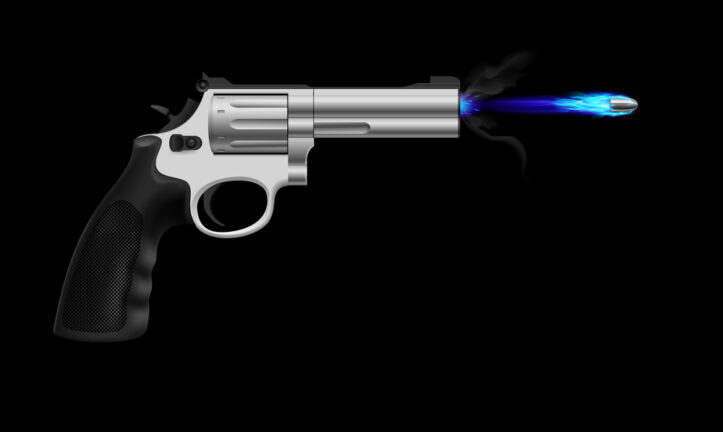Imminent danger is needed for self defense says Fairfax criminal lawyer
Imminent danger is needed for self defense says Fairfax criminal lawyer

Imminent danger must be present for a Virginia assault defendant to be permitted to exercise physical force that would otherwise be criminally assaultive
Imminent danger [ID] must be present for a person to successfully advance a defense of self defense against an assault prosecutions. As a Fairfax criminal lawyer, I hear many of my clients and potential clients assert self defense, defense of others and pre-emptive attacks. Even using physical force that many or most people would consider justifiable and with an imminent threat does not automatically mean that your judge and jury will see it that way. Moreover, most alleged assault incidents happen without defense witnesses and without videotaping to record the event, leaving the matter to the factfinder’s determination of the credibility and reliability of witnesses, and leaving the defendant to decide whether to waive his or her right to remain silent under the Constitution’s Fifth Amendment. As challenging as it may be to avoid physical confrontation in the first place, that is ideal. Of course, I have heard the idea that the first person to strike in a confrontation is the more likely to win, but I am not convinced of that, unless this is about a fully disabling first strike.
Imminent danger is viewed from a reasonable person standard, and not from your mental and visual filter
I regret to say that decades ago when I got bumped by another car when entering a main roadway, I identified the wrong driver as having been the one who struck me. I motioned that misidentified driver to pull over, so that I could get their insurance information in the even there was any damage (none) to my car. I was stunned at how calmly and respectfully the other driver told me he had not struck my car, and my passenger confirmed the same. How did I misidentify the driver who bumped me? Maybe because the bumping driver said “aw sh*t” to themselves and sped away. However, this underlined that our perception is not always correct. Moreover, our perception that another has ill intentions towards us is not always correct. For instance, one late evening on the way back home from far north of me, I saw what seemed to be a possibly unfriendly man in the fast food line, whom I considered walking away from. However, at that very moment, in a classic accent from that region, He inquired of me: “Excuse me. Do you know if they have eggnog shakes here?” A: “I do not know.” Q: “Have you ever had an eggnocg shake?” A: “No.” Q: “You gotta have one. It tastes just like eggnog, only thickah.” At that moment, this man — whom never seemed an imminent danger in the first place — had transformed into an icebreaking, harmless-seeming breath of fresh air in the midst of my otherwise monotonous five hour drive home. Throwing a punch or worse can sometimes turn out not only to be ill considered, but an action that nobody agrees with.
Having a handgun nearby can make the firearm irresistible to fire
As much as I am a strong proponent of giving full teeth the the Second Amendment’s right to bear arms — both because not putting teeth into one amendment can weaken the rest, and because I think criminal firearm laws are too rampant and harsh overall — I also know that their presence on and near people leads to more impulsive shootings than otherwise, whether or not they perceive an imminent danger. Whether or not he shot impulsively, consider the five-year active prison sentence that Grover Gordon, Jr., got as a result of shooting and permanently injuring a man after the man and his friend approached Gordon at Gordon’s car. ”Gordon testified that he fired the gun because he ‘feared for [his] life’ and thought he was going to be killed and he ‘shot to shoot [Cheatham] because [he] . . . couldn’t see him.'” Gordon’s Virginia trial judge instructed the jury on self defense, and the jury clearly did not buy that defense, in having convicted Gordon of attempted murder, using a firearm in the commission of a felony, aggravated malicious wounding, and discharging a firearm from a motor vehicle.
How do I convince my judge or jury that I was in imminent danger when I used force?
Usually, when physical force is justified to address real or perceived imminent danger, everything is happening so quickly that twenty twenty hindsight become far superior to judgment happening in the moment. For that reason, what made sense to the self defending person at the time will not automatically make sense to the judge or jury. In any event, in Gordon’s unpublished Virginia Court of Appeals opinion, the court reiterates the commonwealths’ self defense law as follows: “‘In order to establish self-defense, a defendant must show that he . . . “reasonably believed that [he] was in danger of serious bodily harm or death’”’ Id. (alterations in original)… ‘In addition, he must
demonstrate “that he was in [ID] of harm’ by showing “an overt act or other circumstance” that constitute[d] “an immediate threat to safety.”‘ Gordon v. Commonwealth of Virginia Record No. 0126-23-2 (unpublished) (July 30, 2024).
Help the jury feel your fear in the moment
So long as you did in fact act violently only in self defense against imminent danger, talk to your Virginia criminal lawyer about helping the jury or judge (if your trial is without a jury) to fully feel your fear in the moment against your perceived ID. This might come from your testifying in present tense and addressing how your are feeling in that moment of time on the incident date. Most people do not talk in that manner in daily conversation, so this will take working with your lawyer and yourself on this.
Fairfax criminal lawyer Jonathan Katz understands that your defense may not at first sound perfect to your judge or jury, so Jon Katz works closely with you in narrowing any gap between what made you tick on the allegedly criminal incident date and the factfinder’s perception of you. Call 703-383-1100 for your free in-person initial strictly confidential consultation with Jon about your court pending case. In the meantime, get to know Jon and his devotion to you and your defense, through our client reviews and through his weekly Beat The Prosecution podcast.

